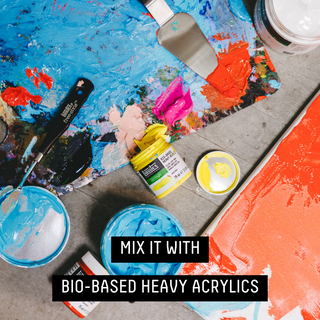CJ Attard Insights
Exploring the latest trends and insights in various industries.
Painting Secrets Hidden in Plain Sight
Unlock the art world’s best-kept secrets! Discover hidden painting tips and techniques that will transform your creativity and skills.
Unlocking the Mystery: 5 Hidden Techniques Every Painter Should Know
Unlocking the Mystery of painting involves more than just mastering basic techniques; it requires an understanding of the hidden methods that can elevate your artistry. Here are five hidden techniques every painter should know:
- Glazing: This technique involves applying a transparent layer of paint over a dry layer, allowing light to penetrate and create depth.
- Scumbling: A method where you apply a thin layer of lighter paint over a dry darker layer to create a textured effect.
- Underpainting: Starting with a monochromatic base to establish values before adding colors can dramatically enhance your painting.
- Palette Knife Techniques: Using a palette knife instead of a brush can add unique textures and unexpected patterns to your work.
- Wet-on-Wet: Applying wet paint onto wet paint can create beautiful, spontaneous blends of color that are difficult to achieve otherwise.

The Art of Observation: Discovering Secrets in Famous Paintings
The art of observation goes beyond merely looking at a painting; it involves engaging with the visual narrative that unfolds on the canvas. Each brushstroke, color choice, and composition of a famous painting holds a wealth of secrets waiting to be uncovered. For instance, when studying Vincent van Gogh's 'Starry Night', one might notice how the swirling skies seem to pulsate with emotion. This dynamic interplay invites viewers to reflect on the artist's psychological state, encouraging a deeper understanding of the interplay between art and human experience.
Moreover, exploring the secrets embedded in renowned works can lead to surprising revelations about history, culture, and technique. Take, for example, Leonardo da Vinci's 'Mona Lisa'; her enigmatic smile has captivated audiences for centuries, but a closer look reveals deliberate choices in lighting and perspective that enhance her mystery. By honing our observation skills, we not only appreciate these masterpieces on a superficial level but also unearth the myriad layers of meaning that resonate with viewers across generations.
What Makes a Masterpiece? Unveiling the Hidden Elements in Art
At the core of every masterpiece lies a combination of technical skill and emotional resonance. Artists often spend years honing their craft, mastering techniques that allow them to manipulate materials to convey their vision. This technical proficiency is crucial, but it is the emotional depth that truly distinguishes a masterpiece. Whether it’s a painting that evokes nostalgia, a sculpture that embodies strength, or a piece of music that stirs the soul, the ability to connect with the audience on an emotional level is a significant factor in what makes a work of art unforgettable.
Moreover, elements such as context and innovation play vital roles in the creation of a masterpiece. The historical and cultural backdrop against which an artwork is created can influence its interpretation and significance. Artwork that challenges conventions or introduces new ideas often stands out in the annals of art history. As we explore various masterpieces across time, we can identify recurring themes and techniques that artists use to push boundaries and engage viewers, ultimately unveiling the hidden elements that contribute to their status as true masterpieces.